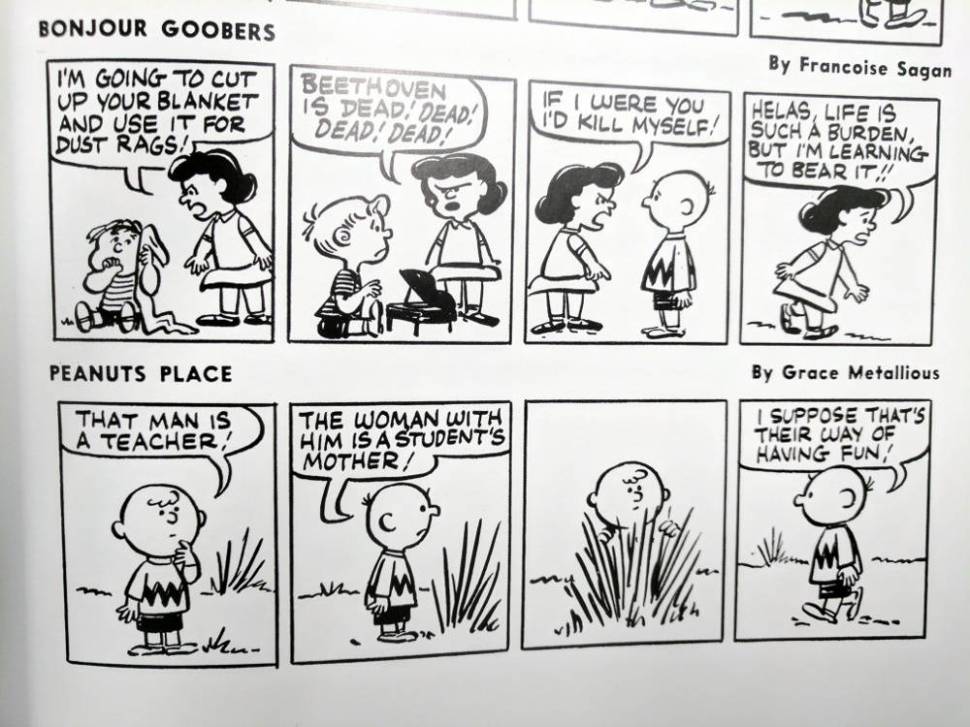The whole story of MAD and the MAD-alikes begins with censorship. The fraudster Frederic Wertham engineered a moral panic over comic books with his book "Seduction of the Innocent, which created a decades-long regime of self-censorship by the comics industry, all but killing off the idea (in the USA, at least) that comics could be part of an adult's media diet.
To escape the censorship, Kurtzman convinced Gaines to repackage MAD as a "magazine," changing format slightly and moving into an entirely different regulatory space. With comics for adults all but unavailable, MAD was the go-to place for adult material in graphic form and quickly rocketed to a circulation in the millions. It helped, of course, that the near-extinction of the comics industry had put a glut of the most talented graphic storytellers out of work and available as MAD regulars — Steve Ditko, Jack Kirby, Basil Wolverton and others among them.

MAD's success was a wake-up call for its competitors, from serious humorists to fly-by-night imitators. These magazines, with names like "Zany," "Loco" and "Cockeyed" appeared and disappeared after a few issues, or, at the best of times, a few years. Some appeared to be filled with off-cuts from others, while some were moments of could-have-been-greats that featured material that went to places MAD was too timid to tread. Many were offshoots of the girlie magazine genre, and mixed "cheesecake" and pinups with their humor — think Playboy's cartoons — and others lampooned the gossip genre, using broad and grotesque caricatures of the most popular stars of the day to move product.
I grew up in the 70s and 80s in one of the echoes of this era. I remember eagerly raiding the magazine racks of unfamiliar convenience stores, hoping that this time I'd find an issue of a MAD-alike that I'd never heard of before, placed by some off-brand distributor who'd been inveigled into taking on someone's weird bet on weirder satire. The magazines in Behaving Madly are instantly recognizable as the ancestors of those magazines I found in my own childhood.
The accompanying text is a lovely piece of satire history, and notes the many odd turns in the genre — like the short-run MAD ripoff that Stan Lee edited (and another, even shorter run one that Lee probably edited but never put his name to); then there's the multiple magazines that had the same name, decades apart; the moonlighting work that MAD's own stable of artists and writers did for the competition, and the habitual lampooning of Gaines in the competition's artwork.
The book ends with a great sequence of spreads from MAD and its competition: first, a petulant two-page MAD spread called "HOW TO PUT OUT AN IMITATION OF MAD," then, from the scrappy competitors, imitations of this guide, pointedly showing MAD's own extravagant and uncredited borrowing, lampooning the outrage of a satirist who can't bear to be satirized.
If you've ever read the early issues of MAD (or for that matter, some of the later ones), you know that the magazine often fell short of the mark with its comedy. MAD became the industry leader by being lucky as well as being good, having more hits than misses. Any one of these competitors (almost) could have found the same winning combo, and each one represents an alternative universe of satire that died a-borning. What a treat it is to have a chance to read them and read about them now.
Behaving Madly: Zany, Loco, Cockeyed, Rip-off, Satire Magazines
[Craig Yoe and Ger Apeldoorn/Yoe Books]












